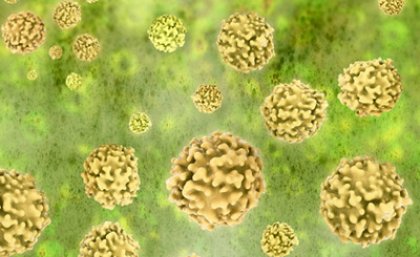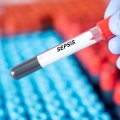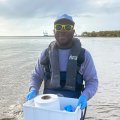
A pandemic of super-resistant gonorrhoea could be kept in check using new methods to track outbreaks of the disease, according to a University of Queensland infectious diseases expert.
Associate Professor David Whiley and his team have developed molecular tools to detect outbreaks of resistant strains of gonorrhoea, a sexually transmitted disease causing serious health complications.
He said molecular methods for detecting resistance worked by detecting specific mutations in an organism’s DNA that made it resistant to antibiotics.
“This is quite different to traditional methods of detecting resistance that rely on growing live bacteria,” he said.
While antibiotics can cure gonorrhoea, drug-resistant strains are increasing in many parts of the world and successful treatment is becoming more difficult.
Notification rates of gonorrhoea have increased over the past 10 years and there are about 13,000 gonorrhoea notifications in Australia each year.
Associate Professor Whiley, from UQ’s Queensland Children’s Medical Research Institute, said there was an urgent need to strengthen gonorrhoea surveillance to guide the use of treatments and maintain global control of the disease.
“The World Health Organisation (WHO) and the United States Centres for Disease Control and Prevention have called for research into the development of alternative treatment options and enhanced gonorrhoea surveillance systems,” he said.
“We propose that molecular methods will complement existing testing regimes and offer improved ability to detect whether any strains are resistant to antibiotic treatments.”
Currently, resistant gonorrhoea is detected through culture-based diagnosis, which involves growing live bacteria and testing it to determine susceptibility to antibiotics. Associate Professor Whiley said the method was effective, but required highly technical skills and resources.
“It may also be unsuccessful if samples have been transported over long distances as this may kill the bug and prevent resistance testing.”
He said such issues had prompted laboratories to move away from culture-based testing, but this could compromise the detection of resistant strains.
“This is quite scary as it leaves health authorities without early warning signs if super-resistant strains arrive,” he said.
“Our team has had initial success in using a new molecular method to screen for resistant gonorrhoea in clinical samples collected in remote Australian communities, where penicillin-based treatments are typically used for the disease.
“The molecular method can confirm if a strain is sensitive to penicillin and the method is now being used to help inform guidelines for the clinical management of locally acquired gonorrhoea in remote Australian communities.
“We know that molecular methods are successful and, if used in conjunction with traditional culture-based methods, will increase our ability to track and hopefully limit the spread of super-resistant strains.
“This knowledge will enable us to quickly identify patients with resistant strains and if needed to administer more appropriate treatment and to prevent further disease transmission.”
The research has been published in this month’s Nature Reviews Microbiology (March 2014).
The research is a collaboration among the UQ Queensland Children's Medical Research Institute; the WHO Collaborating Centre for Sexually Transmitted Diseases and HIV, Prince of Wales Hospital, Sydney; Melbourne Sexual Health Centre, University of Melbourne; the Kirby Institute, University of New South Wales, and the Sydney Sexual Health Centre, Sydney Hospital.
Media: Associate Professor David Whiley, 07 3636 1623, d.whiley@uq.edu.au; Faculty of Medicine and Biomedical Sciences Communications and Marketing officer Kate Gadenne, 07 3346 3036, 0438 727 895, k.gadenne@uq.edu.au.
Gonorrhoea:
Gonorrhoea is a bacterial infection with similar characteristics to chlamydia. Like chlamydia, gonorrhoea infects reproductive organs, can be asymptomatic and increases the chances of contracting other infections. If left untreated, gonorrhoea can also cause infertility in men and women. While antibiotics can cure gonorrhoea, drug-resistant strains are increasing in many parts of the world and successful treatment is becoming more difficult.
In contrast with chlamydia, more men than women were diagnosed with gonorrhoea in 2011: 8056 men, compared with 3789 women. Men aged 20-24 years had the highest diagnosis rate, with 213 diagnoses per 100,000, followed by 185 per 100,000 for those aged 25-29 years. For women, the highest rates of diagnosis were in the youngest age groups, with 178 and 128 diagnosed per 100,000 for those aged 15-19 years and 20-24 years respectively. Men and women aged between 15 and 34 years accounted for nearly three quarters (74 per cent) of total gonorrhoea diagnoses.
For both men and women, the rate of diagnosis has increased over the past 10 years, particularly among people aged 45 years and over. For men aged 45-49 years, the rate more than doubled between 2001 and 2011, from 25 per 100,000 to 66 per 100,000. Women of the same age range experienced a similar increase, from 3.4 per 100,000 to 8.6 per 100,000.
Source: Australian Bureau of Statistics: http://www.abs.gov.au/AUSSTATS/abs@.nsf/Lookup/4102.0Main+Features10Jun+2012












